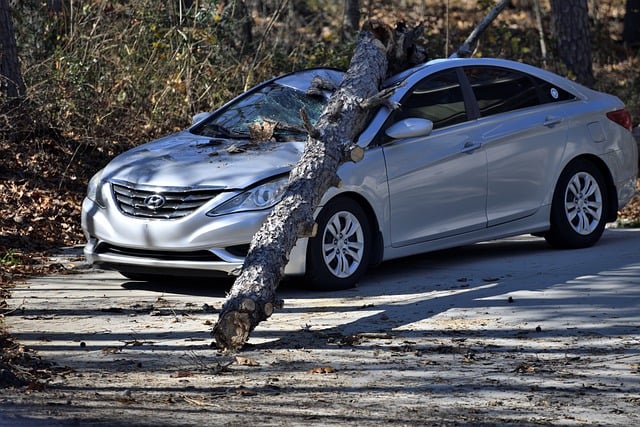Comprehensive car insurance, also known as full coverage, offers protection against a wide range of financial burdens beyond basic liability, including accidents, natural disasters, theft, vandalism, and animal-caused damage. It provides peace of mind by mitigating unexpected incidents that could result in hefty repair bills or financial strain. Understanding what comprehensive car insurance covers is essential when choosing tailored insurance options, balancing cost and coverage to align with individual needs while navigating policy terms and exclusions.
Looking for affordable comprehensive car insurance but unsure where to start? This guide is your roadmap. We’ll break down what comprehensive car insurance covers, from accidents and theft to natural disasters, ensuring you’re protected. Learn about key components, common exclusions, and how factors like your vehicle and driving history impact costs. By the end, you’ll know exactly what to look for when comparing plans to get the best value for your money.
Understanding Comprehensive Car Insurance: A Basic Overview

Comprehensive car insurance, often referred to as full coverage, is designed to protect vehicle owners from a wide range of financial burdens related to their vehicles. When you have comprehensive coverage, your policy will typically cover repairs or replacements for your car in case of certain events that are not included in basic liability insurance.
So, what does comprehensive car insurance cover? In addition to standard perils like accidents and natural disasters, it also includes protection against theft, vandalism, and damage caused by animals. This type of coverage can be a game-changer for drivers, offering peace of mind knowing that unexpected incidents won’t leave them with a hefty repair bill or financial strain. It’s important to understand these benefits when considering the best insurance options for your needs.
Key Components of Comprehensive Coverage

Comprehensive car insurance, often referred to as ‘full coverage’, is a type of policy that provides protection against various risks associated with vehicle ownership. When we talk about what does comprehensive car insurance cover, it’s important to understand its key components. Firstly, it includes liability cover, which protects you financially if you cause damage to another person’s property or injury to them. This is typically the minimum legal requirement in many places.
Secondly, comprehensive coverage also offers protection for your own vehicle in case of accidents, theft, vandalism, or natural disasters like floods or storms. It covers repairs or even replacement costs, giving you peace of mind knowing that unexpected events won’t leave you burdened with massive bills. Additionally, it may include perks like roadside assistance and legal defense fees if involved in a lawsuit due to a covered incident.
Common Exclusions in Comprehensive Policies

Comprehensive car insurance is designed to offer a broad range of protection, but it’s important to understand what’s covered and what isn’t. While these policies typically include coverage for damage caused by most perils like accidents, theft, natural disasters, and vandalism, there are still some common exclusions. These can include damage resulting from driving under the influence, intentional acts, or war and civil unrest.
When considering a comprehensive car insurance policy, review the policy’s terms carefully to ensure it aligns with your needs. Some policies may also exclude certain high-risk activities, such as racing or off-road driving. Understanding these exclusions is crucial in what does comprehensive car insurance cover, helping you make an informed decision and ensuring adequate protection for your vehicle.
Factors Affecting the Cost of Comprehensive Insurance

The cost of comprehensive car insurance is influenced by several key factors. Firstly, the make and model of your vehicle play a significant role; more expensive cars generally come with higher insurance premiums due to their greater value. Additionally, your age and driving history are critical; younger drivers or those with multiple accidents or tickets may face substantially higher costs due to the increased risk associated with their driving profile. Location also matters; living in an area prone to natural disasters or high theft rates can dramatically affect insurance rates, as these factors increase the likelihood of claims. Furthermore, your coverage choices directly impact the cost. While understanding what does comprehensive car insurance cover is essential, selecting higher deductibles can lower premiums since you’ll pay more out-of-pocket in the event of a claim.
Comparing Comprehensive Plans: What to Look For

When comparing comprehensive car insurance plans, it’s crucial to understand what each policy covers. What Does Comprehensive Car Insurance Cover? This type of coverage protects against a wide range of non-collision related incidents, offering peace of mind on the road. From natural disasters like floods or storms to man-made events such as vandalism or theft, comprehensive insurance steps in to help with repair or replacement costs.
Key factors to consider include deductibles – the amount you pay out-of-pocket before insurance kicks in – and coverage limits, which dictate the maximum payout for claims. It’s important to assess your personal risk factors, vehicle value, and financial situation to determine an appropriate level of comprehensive coverage. This ensures you’re not paying for excess protection while avoiding potential financial strain in case of a claim.
Getting the Best Value for Your Money in Comprehensive Coverage

When considering comprehensive car insurance, understanding what it covers is paramount to getting the best value for your money. This type of coverage goes beyond the standard elements like liability and collision by offering protection against a wide range of potential incidents. It typically includes expenses related to theft, vandalism, natural disasters, and even accidents involving non-owned vehicles or pedestrians. By comprehending these benefits, policyholders can make informed decisions when comparing different plans.
To maximize value, it’s crucial to assess your specific needs and risk factors. For instance, if you live in an area prone to severe weather, ensuring coverage for weather-related incidents is essential. Similarly, if you frequently drive through high-crime zones, comprehensive insurance that covers theft can offer peace of mind. By aligning your policy with these requirements, you can avoid overpaying for unnecessary protections while still being adequately covered when unforeseen events occur.
